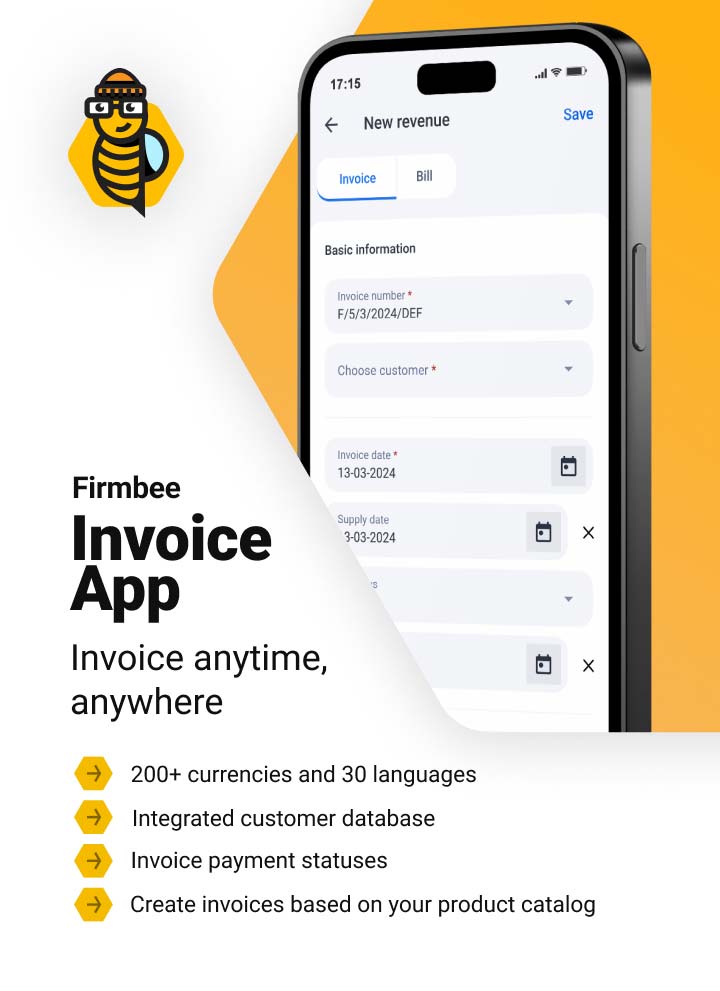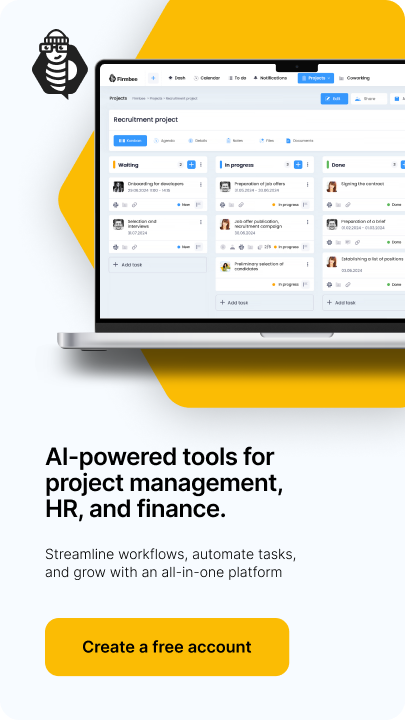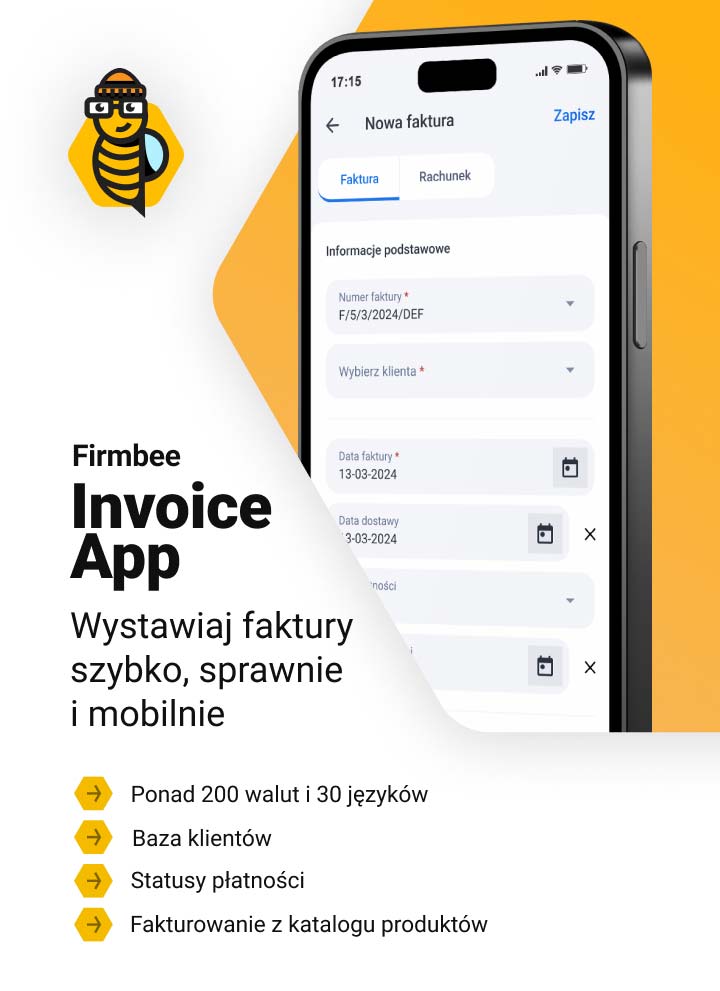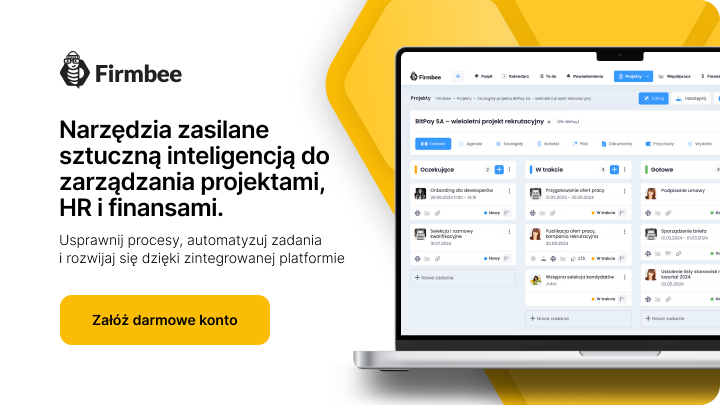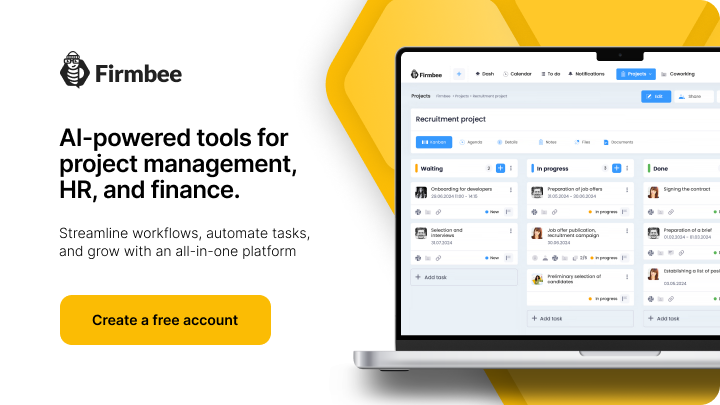On March 14, 2023, OpenAI released the latest version of ChatGPT. Trained for the last six months in the quiet of labs, ChatGPT-4 has more parameters, better short-term memory and enhanced steerability. It is also more accurate than its predecessors, less likely to invent facts and generate malicious content. But, what does it all mean for business? Read on to find out more.
Business opportunities with ChatGPT-4 – table of contents:
- What is GPT-4?
- What’s new with ChatGPT-4?
- Steerability in GPT-4
- Larger context and better memory
- Applications of ChatGPT-4 in business
- What problems may ChatGPT-4 generate?
- Summary
What is GPT-4?
GPT-4, just like its previous version, is a kind of artificial intelligence (AI) that is great at understanding and generating text. GPT stands for:
- Generative – capable of generating novel responses on its own, rather than simply selecting from pre-existing options,
- Pre-trained – that is, trained on massive amounts of textual data to help it learn patterns and structures in natural language,
- Transformer – based on a deep transformer neutral network architecture.
In other words, GPT-4 is a language model capable of self-improvement, which means that it can correct its own mistakes. It is also able to recognize the most relevant information by weighing each input data. Most importantly, GPT-4 was designed to understand the relationships between words and sentences, allowing it to generate more meaningful responses. However, due to the enormous demand and constant work to provide access to more users, you may often have to wait quite a long time for an answer.

What’s new with ChatGPT-4?
ChatGPT-4 has one major disadvantage compared to its predecessor: it is not free. However, its capabilities make up for this inconvenience. You can use the model through the OpenAI API and the new subscription plan, ChatGPT Plus.
The OpenAI API
The OpenAI API has been expanded to process not only text, but also images. This means that the model has become multimodal. To put it another way, it is now able to take an image input and describe what it “sees”. Currently, this feature is being tested by Be My Eyes, an organization that supports the visually impaired. This new function is proving to be incredibly useful, especially when shopping or navigating, as it can identify and read product labels or help individuals find their way around town.
GPT-4 has combined image and text recognition capabilities with code and text generation, which makes it a valuable tool for rapid prototyping. Unfortunately, the feature is not yet publicly available. However, you will soon be able to try out the following techniques:
- sketch a layout of the website on a piece of paper, manually type the content of each module and take a picture of this prototype – GPT-4 will generate a website based on it using, for example, HTML and CSS,
- describe the concept for an iOS app and sketch its interface, and GPT-4 will generate prototype code.
ChatGPT Plus
Although a new chat follows the same principles as its predecessor, it has a few advantages over it:
- It’s 40 % more accurate than GPT-3, which means that its answers are more reliable when it comes to factual information, though it’s still advisable to double-check them.
- It’s 82% less likely to produce harmful and malicious content.
From a business perspective, we believe that the most intriguing improvements lie in two key areas: steerability and length of responses. Let’s describe them in more detail.
Steerability in GPT-4
One of the prerequisites for creating longer, meaningful and consistent content is the steerability of the model. With steerability, the model can’t be confused by questions taken out of context and you can talk to it as if it was a real person, and not just a bunch of words.
The easiest way to understand how ChatGPT-4 integrates steerability is to precede your prompts with one of the phrases:
- “Answer as…”
- “Act as…”
- “You’re a person who…”
In this way, you can have a conversation with a simulated:
- expert,
- client,
- competitor,
- mentor,
- consultant.
The new chat will stick to its role even if you try to confuse it by asking tricky questions.
Larger context and better memory
Another significant change introduced in GPT-4 is an increase in the length of responses and the model’s memory capacity. With this upgrade, it can generate longer, more detailed answers, as well as better understand the context of previous statements in a conversation. To compare, ChatGPT-3 generated responses of no more than 8,000 words. Its successor can produce coherent statements of up to 25,000 words.
As a result, GPT-4 can potentially become even more useful in business, particularly in sectors where complex, long-term and contextual communication with customers, partners or employees is needed.
At this point, it’s worthwhile to mention Chain-of-Thought Prompting which is a technique that allows for more efficient communication with GPT-4. By providing a series of related prompts that build upon each other, Chain-of-Thought prompting can help guide the language model towards generating more coherent and relevant responses. For example, you can ask it the following series of questions:
- What are the main sources of startup funding?
- What are the pros and cons of using your own capital as compared to raising external funds?
- How do angel investors and venture capital firms differ in how they fund startups?
In this way, you will make sure that GPT-4 understands the context and the information it provides will be detailed and specific.
Applications of ChatGPT-4 in business
Thanks to the improvements to the current model, GPT-4 is better at:
- Customer service – with better short-term memory and steerability, GPT-4 can be used to partially automate customer service and provide proactive support, speeding up the response time and improving the quality of responses.
- Content generation – under the watchful eye of a professional content writer and with the right amount of care, GPT-4 can help generate high-quality content for blogs, websites and marketing materials, adapting to the style and tone of a brand.
- Data analysis – thanks to advanced prompts, GPT-4 can be used for analyzing large textual data sets, such as customer reviews and market reports to uncover emerging trends and insights.
- Business process automation – GPT-4 as an API can automatically generate reports, analyze contracts, summarize and even write emails, which saves time and increases efficiency.
- Prototyping and software development – as we’ve mentioned before, GPT-4 can speed up prototyping processes and code generation, which can reduce the time to implement new products or functionalities.
What problems may ChatGPT-4 generate?
However, despite numerous improvements, ChatGPT-4 can still create issues that you can’t ignore if you want to use it for business. Here are some of them:
- It generates code that can contain errors which are hard for humans to identify. This is because such mistakes are not the kind that humans usually make. Therefore, it is essential to review AI-generated responses meticulously before implementing them on your corporate website.In a broader context, it’s important to note that irresponsible use of AI can lead to Internet security issues.
- A flood of low-quality content generated by… people. Companies are outsourcing the creation of large volumes of content based on simple, repetitive prompts to unqualified people. If GPT-generated materials are published without control, they may be of low quality. Publishing a large amount of content won’t lead to better site visibility or customer acquisition as the focus now is on usefulness, not quantity.
- Although GPT-4 is more accurate than its predecessor, it can still generate factual errors. Therefore, it is important not to treat it as an infallible source of information, but as a supporting tool whose answers should be verified.
- Despite its long conversation memory, it may lose context in complex conversations such as those involving customer service, technical problem-solving, or content creation. In such cases, it is necessary to remind the model of relevant information from earlier responses, which, unfortunately, limits its usefulness as a standalone tool.
- While there have been improvements in the filtering of harmful content, GPT-4 may still generate inappropriate or controversial responses.
Summary
Improved accuracy, better short-term memory and steerability, as well as a lower risk of generating malicious content – this is how we can sum up GPT-4’s improvements over its predecessors. Available through the OpenAI API and ChatGPT Plus subscription, the model is capable of producing longer, more coherent responses, and promises access to image processing in the near future. The steerability of the model allows for more natural conversations and strict adherence to tasks. However, GPT-4 still has its problems, such as generating errors, losing context, or providing inappropriate responses. Nevertheless, the pace at which it is developing begs the question: is anyone truly free from these problems?
Read also: 3 awesome AI writers you must try out today.
If you like our content, join our busy bees community on Facebook, Twitter, LinkedIn, Instagram, YouTube, Pinterest, TikTok.
Author: Robert Whitney
JavaScript expert and instructor who coaches IT departments. His main goal is to up-level team productivity by teaching others how to effectively cooperate while coding.
AI in business:
- Threats and opportunities of AI in business (part 1)
- Threats and opportunities of AI in business (part 2)
- AI applications in business - overview
- AI-assisted text chatbots
- Business NLP today and tomorrow
- The role of AI in business decision-making
- Scheduling social media posts. How can AI help?
- Automated social media posts
- New services and products operating with AI
- What are the weaknesses of my business idea? A brainstorming session with ChatGPT
- Using ChatGPT in business
- Synthetic actors. Top 3 AI video generators
- 3 useful AI graphic design tools. Generative AI in business
- 3 awesome AI writers you must try out today
- Exploring the power of AI in music creation
- Navigating new business opportunities with ChatGPT-4
- AI tools for the manager
- 6 awesome ChatGTP plugins that will make your life easier
- 3 grafików AI. Generatywna sztuczna inteligencja dla biznesu
- What is the future of AI according to McKinsey Global Institute?
- Artificial intelligence in business - Introduction
- What is NLP, or natural language processing in business
- Automatic document processing
- Google Translate vs DeepL. 5 applications of machine translation for business
- The operation and business applications of voicebots
- Virtual assistant technology, or how to talk to AI?
- What is Business Intelligence?
- Will artificial intelligence replace business analysts?
- How can artificial intelligence help with BPM?
- AI and social media – what do they say about us?
- Artificial intelligence in content management
- Creative AI of today and tomorrow
- Multimodal AI and its applications in business
- New interactions. How is AI changing the way we operate devices?
- RPA and APIs in a digital company
- The future job market and upcoming professions
- AI in EdTech. 3 examples of companies that used the potential of artificial intelligence
- Artificial intelligence and the environment. 3 AI solutions to help you build a sustainable business
- AI content detectors. Are they worth it?
- ChatGPT vs Bard vs Bing. Which AI chatbot is leading the race?
- Is chatbot AI a competitor to Google search?
- Effective ChatGPT Prompts for HR and Recruitment
- Prompt engineering. What does a prompt engineer do?
- AI Mockup generator. Top 4 tools
- AI and what else? Top technology trends for business in 2024
- AI and business ethics. Why you should invest in ethical solutions
- Meta AI. What should you know about Facebook and Instagram's AI-supported features?
- AI regulation. What do you need to know as an entrepreneur?
- 5 new uses of AI in business
- AI products and projects - how are they different from others?
- AI-assisted process automation. Where to start?
- How do you match an AI solution to a business problem?
- AI as an expert on your team
- AI team vs. division of roles
- How to choose a career field in AI?
- Is it always worth it to add artificial intelligence to the product development process?
- AI in HR: How recruitment automation affects HR and team development
- 6 most interesting AI tools in 2023
- 6 biggest business mishaps caused by AI
- What is the company's AI maturity analysis?
- AI for B2B personalization
- ChatGPT use cases. 18 examples of how to improve your business with ChatGPT in 2024
- Microlearning. A quick way to get new skills
- The most interesting AI implementations in companies in 2024
- What do artificial intelligence specialists do?
- What challenges does the AI project bring?
- Top 8 AI tools for business in 2024
- AI in CRM. What does AI change in CRM tools?
- The UE AI Act. How does Europe regulate the use of artificial intelligence
- Sora. How will realistic videos from OpenAI change business?
- Top 7 AI website builders
- No-code tools and AI innovations
- How much does using AI increase the productivity of your team?
- How to use ChatGTP for market research?
- How to broaden the reach of your AI marketing campaign?
- "We are all developers". How can citizen developers help your company?
- AI in transportation and logistics
- What business pain points can AI fix?
- Artificial intelligence in the media
- AI in banking and finance. Stripe, Monzo, and Grab
- AI in the travel industry
- How AI is fostering the birth of new technologies
- The revolution of AI in social media
- AI in e-commerce. Overview of global leaders
- Top 4 AI image creation tools
- Top 5 AI tools for data analysis
- AI strategy in your company - how to build it?
- Best AI courses – 6 awesome recommendations
- Optimizing social media listening with AI tools
- IoT + AI, or how to reduce energy costs in a company
- AI in logistics. 5 best tools
- GPT Store – an overview of the most interesting GPTs for business
- LLM, GPT, RAG... What do AI acronyms mean?
- AI robots – the future or present of business?
- What is the cost of implementing AI in a company?
- How can AI help in a freelancer’s career?
- Automating work and increasing productivity. A guide to AI for freelancers
- AI for startups – best tools
- Building a website with AI
- OpenAI, Midjourney, Anthropic, Hugging Face. Who is who in the world of AI?
- Eleven Labs and what else? The most promising AI startups
- Synthetic data and its importance for the development of your business
- Top AI search engines. Where to look for AI tools?
- Video AI. The latest AI video generators
- AI for managers. How AI can make your job easier
- What’s new in Google Gemini? Everything you need to know
- AI in Poland. Companies, meetings, and conferences
- AI calendar. How to optimize your time in a company?
- AI and the future of work. How to prepare your business for change?
- AI voice cloning for business. How to create personalized voice messages with AI?
- Fact-checking and AI hallucinations
- AI in recruitment – developing recruitment materials step-by-step
- Midjourney v6. Innovations in AI image generation
- AI in SMEs. How can SMEs compete with giants using AI?
- How is AI changing influencer marketing?
- Is AI really a threat to developers? Devin and Microsoft AutoDev
- AI chatbots for e-commerce. Case studies
- Best AI chatbots for ecommerce. Platforms
- How to stay on top of what's going on in the AI world?
- Taming AI. How to take the first steps to apply AI in your business?
- Perplexity, Bing Copilot, or You.com? Comparing AI search engines
- ReALM. A groundbreaking language model from Apple?
- AI experts in Poland
- Google Genie — a generative AI model that creates fully interactive worlds from images
- Automation or augmentation? Two approaches to AI in a company
- LLMOps, or how to effectively manage language models in an organization
- AI video generation. New horizons in video content production for businesses
- Best AI transcription tools. How to transform long recordings into concise summaries?
- Sentiment analysis with AI. How does it help drive change in business?
- The role of AI in content moderation

